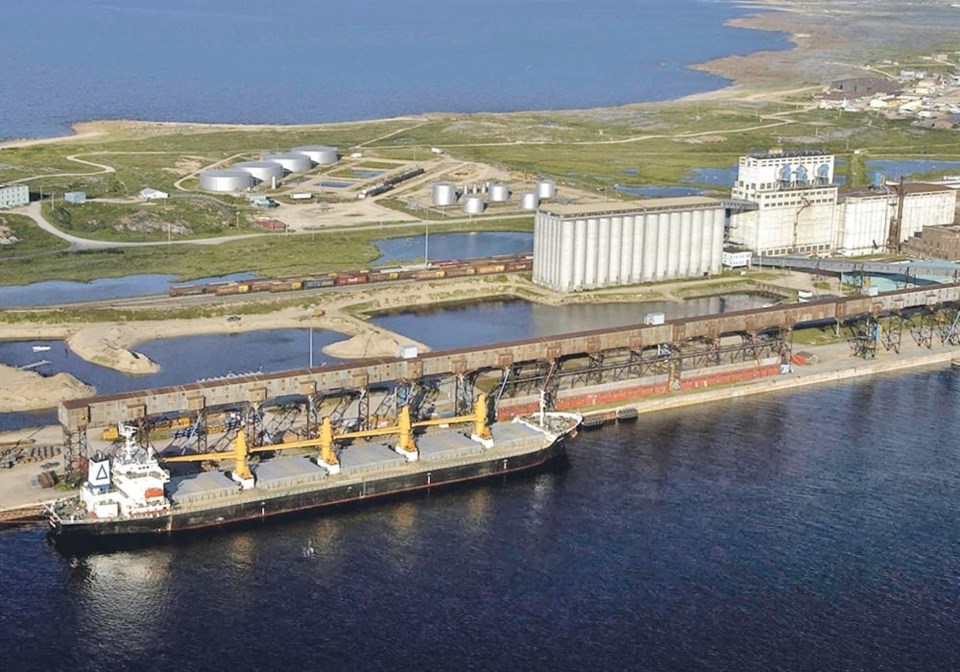WESTERN PRODUCER — Getting to tidewater quickly and reliably makes exporters successful. Whether it’s ore, wood, processed materials or oil and gas, ocean ports are keys that unlock profits. Crops, fertilizers and other bulk cargo are among the most susceptible to high transportation costs. And when it comes to these, every penny of costs comes out of farmers’ pockets.
Churchill is the Prairies’ ocean port and despite its challenges, it remains a viable option for bulk cargo from the middle of Canada. The earlier that material leaves highways for railways and railways for water, the better it is to reduce costs and strain on the environment.
Since its construction in the late 1920s, the port and its rail line have been viewed as visionary and as a public service for the north and for farmers. Before the end of the Canadian Wheat Board, the port often handled more than 400,000 tonnes of grain in its July to November shipping season.
The rail link from The Pas is receiving $147 million in new money from Manitoba and federal governments this year in addition to federal investments of $157 million made in 2018 to make improvements to the rail and port. After being closed for two seasons after flooding in 2017, the tracks are back in business.
AGT Foods and investors have exited ownership of port and rail, which are now solely owned by 29 Indigenous and 12 other local groups. The Arctic Gateway Group is the latest to look for port business. Prairie crops going out and fertilizer coming in are among the most attractive options. However, bitumen and recycled plastic pucks may also have a place.
A challenge for any shipper is reliability and the Churchill track has lacked that since it was first laid across the ever-shifting, melting and freezing soils and muskeg. Current repairs are aimed at making long-term improvements so shippers hoping for options that don’t involve the Great Lakes Seaway, a plod through the Rockies or rail through congested systems in Eastern Canada or the United States might see a hopeful alternative.
Those tracks also form an important summer resupply link to Canada’s northernmost regions by barge from Churchill and are a significant feature of Canadian sovereignty in the region.
Prior to recent Russian hostilities to is neighbour, there were concerns that an increasing number of ice-free days in the Northwest Passage was attracting interest from China and Russia, even though that passage is an internal Canadian waterway. Current problems with Russia and a more aggressive China have done nothing to reduce those concerns.
A more trade-friendly Northwest Passage would also be viable for bulk cargo through Churchill to and from Asia via northern Russian ports. Flow of goods across the region would expand maritime insurance options and increase interest from ship operators.
Fertilizer destined for prairie farms has been imported from Russia through Churchill in recent times. However, that Murmansk option will be on hold for the foreseeable future.
A hotter, drier climate could reduce sea ice along with flows on the Mississippi, creating an expanded demand for shipping from the American upper Midwest and a method of feeding it.
It might be time Canada renewed its naval gazing and considered what a third reliable and viable coastal port — Churchill — could do for its landlocked centre and its international profile.
Karen Briere, Bruce Dyck, Barb Glen and Mike Raine collaborate in the writing of Western Producer editorials.




